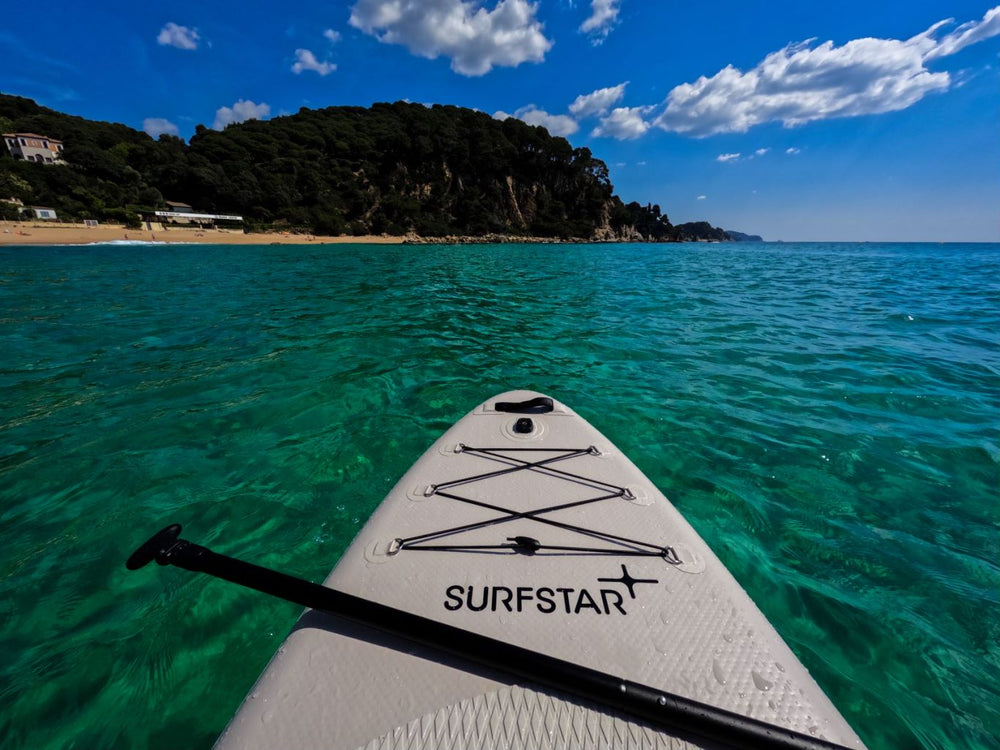How Popular is Stand Up Paddleboarding?
And if data isn’t your thing, just think about it like this: when is the last time you were out on a lake, river, or at the beach and didn’t see a SUP? SUPs are affordable to buy, easy to store, and available for rent practically anywhere a body of water can be found! So it’s pretty safe to say that Stand up paddleboarding is very popular worldwide.
But how did Stand Up Paddleboards become so popular? Why do people like them so much? In this post, you’ll learn:
- A brief history of SUPs
- Different types of SUPs and where to use them
Let’s get started!
A Brief History of SUPs
To understand how SUPs came to be, you first need to know why people invented them. It’s hard to imagine now, but thousands of years ago, it was very difficult for people to live in great numbers away from large bodies of water. People depended on the ocean and coastline to provide resources and food to survive! In fact, if you consider the densest population centers in the world today, many of them are situated along the coast, showing that we still depend on natural resources from the ocean.
The very first people who lived along the coast needed a way to travel and catch fish, which resulted in watercraft like paddle boards to be created! While it’s difficult to know who created the very first paddleboards, it’s certain that ancient people in Polynesia and along the coast lines of South America used SUPs for survival purposes.
SUPs stayed relatively unknown for a long time until they began to get attention on the beaches of Hawaii. Dave Kalama and Laird Hamilton gained a ton of attention when they began to use canoe paddles to paddle themselves on their surf boards out into the waves. People noticed how quickly they were able to get past the wave break and get away from the large crowds that populated the beaches.
At the time, Kalama and Hamilton merely used the equipment that was available to them. They used their 12’ long surf boards and a canoe paddle to move around the water. As more people latched onto the idea that SUPs could be a legitimate new sport, more people began to design specialty SUPs to get the most performance out of them as possible! Today, there are tons of features that you can find on SUPs that show just how much they have grown since the mid-1990s when SUPs became popular for recreational use!
Types of SUPs and Where to Use Them
There are several different factors to consider when purchasing a SUP. “Where will you be using it the most”, “how will you store it”, and “how will you transport it to the water” are some of the most important questions to consider when getting into stand-up paddling. With that in mind, let’s talk about the two styles of SUPs available to choose from today: Hard SUPs and Inflatable SUPs.
Hard SUPs
Considering that the very first SUPs that Kalama and Hamilton were using were surfboards, it’s no wonder that the first SUPs made also used the same material used to make surfboards! While the market was very small at the start and materials were somewhat limited, today, hard SUPs can be made from fiberglass, hard plastic, and wood. Each material affects the performance, longevity, and cost of the SUP.
Hard SUPs are typically best for surfing at the beach as well as paddling in flatwater where there are limited underwater obstacles. The solid construction is great for beginners to get a feel for how to balance on the board, which will help anyone new to the sport to progress with confidence.
The biggest drawback to hard SUPs is the storage and transportation aspect. To properly transport a hard SUP, you need to either invest in a roof rack for your vehicle or purchase a vehicle like a pick-up truck to move your SUP to and from the water. Once at home, you’ll also need to have a space large enough to store your SUP to protect it from getting damaged.
Inflatable SUPs
As SUPs became more popular, designers began playing with different materials to create SUPs. One of the best things to happen to the sport was when designers tried making SUPs out of PVC! PVC had been used to make whitewater rafts, so the material already had an established record of being durable enough to use on the water and rigid enough to maintain its shape when inflated.
Inflatable SUPs are easily the most affordable and easiest type of SUP to transport and store. All you need to use one is a pump and you’re ready to go! The ease of transportation makes inflatable SUPs ideal for those who are limited on space at home or not interest in installing a roof rack on their car.
Additionally, inflatable SUPs can be used in a large variety of water environments. From flat water to whitewater, you can safely enjoy paddling your inflatable SUP.
Final Thoughts
Stand up paddleboarding is easily one of the most popular ways to enjoy the outdoors today. They’ve grown in popularity over the last several years, due in large part to the contributions of people like Dave Kalama and Laird Hamilton, as well as many A list movie stars and musicians. In addition to their help, the rapid spread in popularity can be attributed to the internet. Being able to see how boards are used and then improving on the construction to create more responsive and innovative products has propelled the SUP industry to where it is today!
Those contributions have made getting into stand up paddleboarding easier than ever. So, what are you waiting for? Go get a SUP and experience the joy of paddling through the water for yourself!
To purchase SurfStar boards on Amazon, click:





Leave a comment